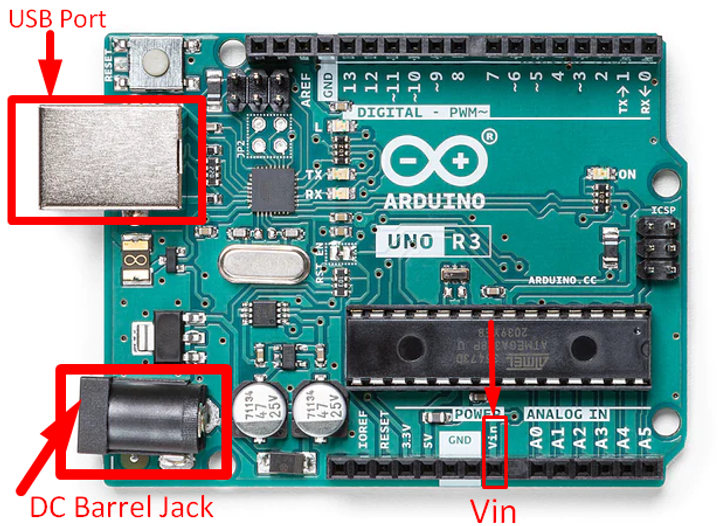Arduino is a great tool for designing prototype projects. Some projects based upon Arduino demands long term functioning like room temperature monitoring, fire alarm and home security system, so a question flash across one’s mind is Arduino capable enough to run 24/7. Arduino development boards are designed using microcontrollers and these controllers have a long life. Here we will discuss all the parameters required to make the Arduino board live longer.
Can I Run Arduino 24/7
Yes, Arduino is capable enough to run 24/7. Arduino can work fine under normal conditions for what they designed for. If the Arduino is properly programmed with all the components of the circuit wired up correctly, then the Arduino has no problem running longer than 24/7.
Factors That Affect the Arduino in a Long Run
However, we need to consider some factors that can affect Arduino in the long run. These factors can be human error or external environmental conditions. Knowing all the factors that can affect Arduino longevity is necessary, so here I will break down all the factors needed to review before running Arduino 24/7 in a circuit.
-
- Constant Input Power
- Programming Techniques
- Heat Management
- External Circuitry Protection
Constant Input Power
Arduino need constant power for stable and optimized running of a code for long duration. Popular Arduino boards like UNO can be powered up using three methods. All these methods have some restrictions:
-
- DC Barrel Jack
- USB Cable
- Vin Pin
USB Cable
Most common way of powering an Arduino is by using a USB port, but it has some limitations as we cannot turn on our PC for a longer period. To run Arduino longer we need to use any external 5V USB port like power bank, USB socket or USB hub. It is one of the most preferable methods as it provides constant 5V with a resettable fuse for overcurrent protection.
DC Barrel Jack
Arduino can be powered up using external power supply through DC barrel jack. One thing to note is external supplies do not provide stable input voltage in the long run. Unstable voltage spikes can overheat the Arduino board and might end up with blue magic smoke. Always prefers to use dedicated power supply.
Vin Pin
Arduino can also intake power through Vin pin. Vin do not have any diode protection against reverse polarity current, negative current can affect Arduino performance. So to run Arduino in projects that require continuous Arduino support it is not recommended to use Vin for powering Arduino.
Programming Techniques
Efficient and optimized programming can lead to running an Arduino for a longer period. Multiple programming techniques are there to take maximum benefit from the Arduino board. Here are some techniques that can help running Arduino boards without getting stuck.
-
- Watchdog Timer
- Avoid Millis Function
- EEPROM Cycles
Watchdog Timer
Sometimes Arduino boards get stuck in an infinite loop due to clocking error. So that’s when the watchdog timer function comes in handy. It resets the Arduino board whenever it’s stuck inside an infinite loop and unable to execute commands. Watchdog Timer helps Arduino to avoid such errors. Program Arduino in such a way that it sends an output signal at any of its set pins every one or two minutes, if watchdog doesn’t receive that signal, it will reset Arduino.
Avoid millis() Function
To run Arduino continuously avoid using millis() function in the program. The millis() is an internal clock counter that resets after every 49 days. If a code has to be run for such a long time, it’s better to reset millis() to 0 before it reaches the 49 days count. You can reset millis() by using a Reset button or reuploading your Arduino sketch. In this way Arduino can keep up for a long time.
EEPROM Cycles
Another thing to avoid is the use of EEPROM.write() function in your code. As EEPROM in Arduino boards has a limited number of write/erase cycles. Maximum EEPROM cycle Arduino UNO can handle is 1,00,000.
Heat Management
Arduino has inbuilt voltage regulators for 5V and 3.3V. These voltage regulators decrease incoming voltages to 5V and dissipate rest of the voltages in the form of heat. It is always recommended to use 7V power supply to prevent Arduino from overheating. Continuous usage of excess voltage can lead to power disruption in Arduino that can affect its working.
Heat sinks can be helpful to keep Arduino cool. Another way to keep the Arduino running is to use an external cooling fan for heat ventilation.
External Circuitry Protection
If Arduino is working in an environment with multiple external circuits attached to it then Arduino may face interference and glitches due to components like relays, motors and other electrical noise causing elements. It is recommended to use external circuit protection such as diodes and fuses to avoid any mishap.
Conclusion
Arduino can run for 24/7 in circuit but it all depends how it is used. Following all the techniques shared in this article Arduino can easily be programmed for complex and long-lasting projects. It’s not recommended to use Arduino for industrial scale circuits or in extreme weather conditions. With proper measurements and dynamic programming Arduino will work fine in the long run.

